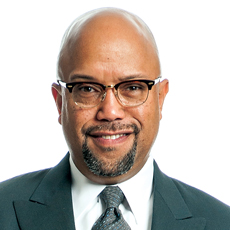
OXON HILL, MD — Long-term care interests are clearly down the priority line in federal budget negotiators, one of the industry’s top lobbyists noted Tuesday, but several key topics also have earned the sector strong consideration.
A main focus is the Care for our Seniors Act, said Clifton Porter II, vice president for governmental affairs for the American Health Care Association / National Center for Assisted Living. Porter met with McKnight’s during a break in the action at the groups’ annual meeting.
“One of our goals that has some chance is the issues relating to funding infection preventionists and then obviously any and everything we can get to improve wages on a pass though as part of the Ways and Means Elder Justice Act markup.”
The pandemic has magnified nursing homes’ staffing shortage. Workforce shortcomings have caused ripple effects that include suspended admissions at a growing number of facilities.
“From a wage and staffing perspective, it’s all about resources,” Porter said. “Obviously, I think we have a great story to tell. Having some priority at a natural level at least gives you a place to start, versus not having a chance at all.”
But despite the pandemic’s effect on eldercare facilities, the enormity of President Biden’s budget proposal — and the resulting tooth-and-nail fight to trim it — have pushed long-term care out of the limelight in many ways.
“The agenda is much bigger than us,” Porter acknowledged. “Unfortunately, it seems that things (funding discussions) seem to be getting narrower rather than broader. Our hope is to ensure that our issues stay on the train.”
A “positive” to be taken from the high-stakes negotiations is that there is at least “a clear understanding that there needs to be some attention to our related issues,” he explained.

“It all really boils down to what that top line number ends up being,” he said, referring to the upper limit that budget negotiators ultimately agree upon. President Biden’s original proposal of $3.5 trillion has been countered by Republicans at about one-third that level. Some Democrats also have called for a much lower ceiling.
“There were discussion today that [Democratic Sen. Joe Manchin] has gone up a little bit, from $1.5 billion to 2.2 (billion), so obviously, that’s the right direction,” Porter said. “Who knows? As the toggles go back and forth, we just have to wait and see.”
Porter said negotiations all but certainly will extend into November and could “very well go into December.”
“But again, once they decide on a top line number, that’s going to be the next flex point. I think things will then start speeding to a conclusion once they get there. But they’re just not there yet.”
Vax mandate ‘the right direction’
The Centers for Medicare & Medicaid Services is in a mandated quiet period before issuing an interim rule for its anxiously awaited healthcare worker COVID-19 vaccination mandate. Therefore, there is no way to know what to expect, Porter said. CMS Chief Medical Officer Lee A. Fleisher, M.D., said Monday the hope is still to issue one by the end of October.
“We’re supporting and pushing and hopeful on the vaccine mandate,” Porter said. “I commend the approach of having a mandate. Hopefully, the rule will come out soon and we’ll know more, with some flexibilities built into that. But I think the spirit of what they’re attempting to do, which is to make sure that every staff member in a facility is vaccinated, is the right direction to go.”
Since the upcoming mandate was announced in mid-August, staff vaccinations have accelerated, Porter noted. According to data submitted to CMS through Sept. 26, 67.1% of nursing home staff nationwide are now vaccinated.
“The good news is we’re making progress.The numbers overall continue to climb, and at a rate that is definitely not what we saw earlier,” he observed.
Another major concern is what CMS will issue in its finalized version of the 2022 physician pay rule. Its early versions propose lower pay rates for physical and occupational therapists and other therapy services, and extend some telehealth service coverages through 2023. Technically, it needs to be issued by the end of the month, but there are ways around that.
“It could blow the deadline. It’s highly conceivable,” Porter said. “Then they could make it retroactive. They can do that again. In light of the circumstances, I think that’s a higher possibility than not.
“The hope is we don’t get whacked. The issue is, as with everything, now is not the time to do that,” he added.
LTC’s relatively small piece in that pie could be a bonus or a hindrance — it could be left in or out for the same reason in either case, Porter pointed out.
“That may work in our favor, frankly. There’s definitely pressure,” he added. “It’s been on the books. We’ve been planning for it. It’s a pay-for, it’s been a pay-for, so deal with it.”



